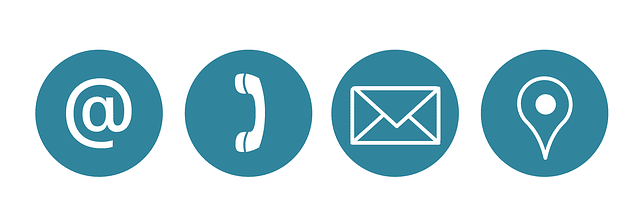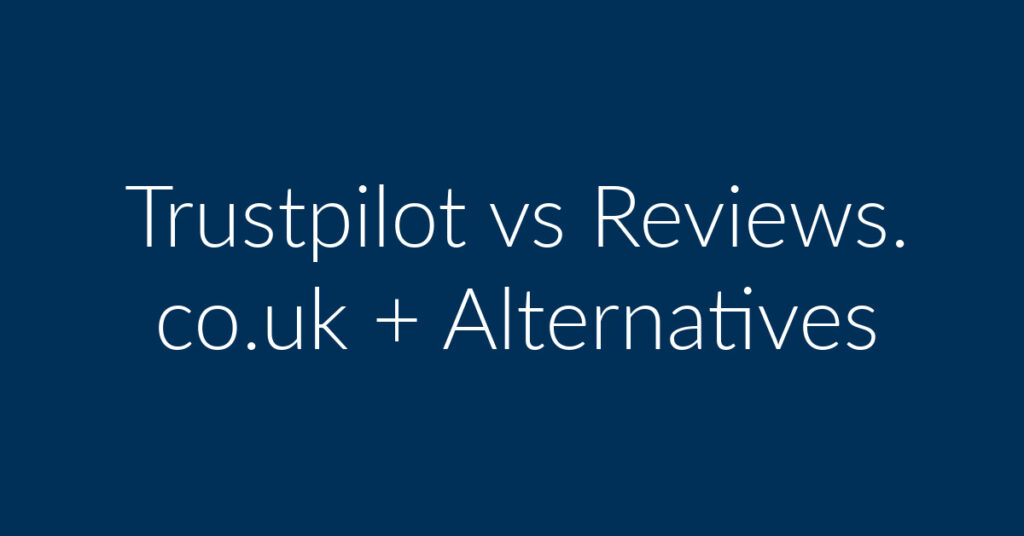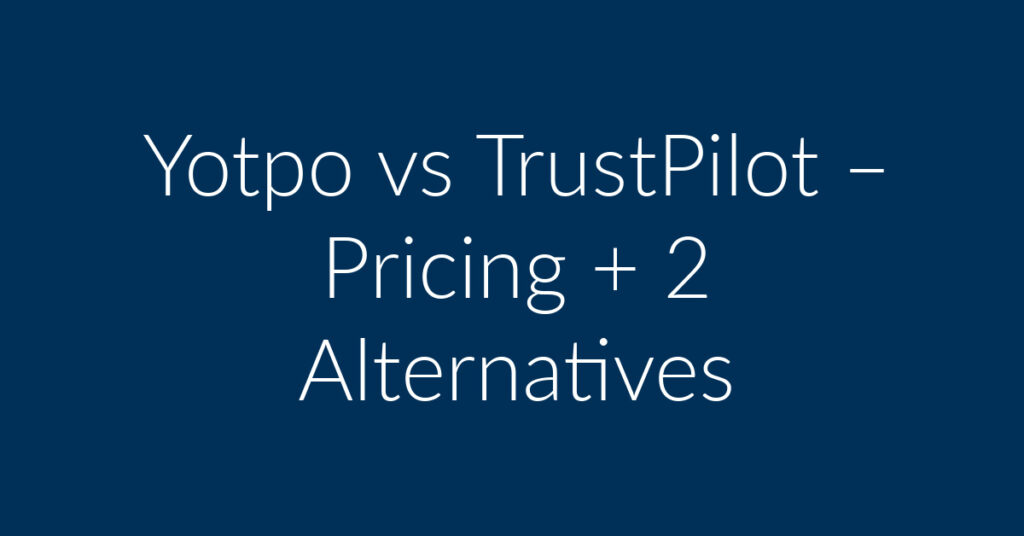Are you looking for templates to help you respond to negative reviews? We understand that managing negative feedback can be challenging. To assist you, we’ve put together 5 templates that you can use for your business. Let’s get started.
Why do Negative Reviews Matter?
Negative reviews are an inevitable part of business life. Yes, you read that correctly! Regardless of how exceptional your business may be, there will always be someone who isn’t completely satisfied. It’s just a fact of life! Eventually, you’ll encounter a disgruntled customer who takes to Yelp or Facebook to post a critical review about your business. So, what should you do in such situations? How do you deal with negative reviews?
It’s crucial to remember that online reviews hold significant importance. For example, a fall of one star on Yelp can translate into a loss in sales of up to 9%. Reviews are far from trivial. In fact, One key point to emphasize is that today, up to 90% of consumers check online reviews before making a purchase.
Given their importance, you need to take reviews seriously. But what steps should you take when faced with negative reviews? As mentioned earlier, negative reviews are unavoidable. They will come, whether you like it or not. What truly matters is how you respond when you receive your first piece of negative feedback.
Tips for Responding to Negative Reviews Without Harming Your Business
Avoid Lashing Out at Customers
When faced with a negative review, resist the urge to lash out. It’s a natural impulse to respond defensively, but engaging in heated exchanges with disgruntled customers only exacerbates the situation. Instead, remember that while the customer may have little to lose, your brand stands to lose a great deal if you respond poorly. Maintaining professionalism is crucial for protecting your reputation.
Include Your Name in Every Response
When crafting responses to reviews, always include your name. This not only personalizes your interaction but also enhances your brand’s visibility in search results. Since review platforms like Yelp often appear in Google search results, adding your name helps with SEO and builds credibility.

Master the Art of Responding to Reviews
Did you know that there’s a structured approach to handling reviews, especially negative ones? Successful brands follow a proven formula when responding to feedback. Here’s how you should craft your responses:
5 Templates to Guide Your Responses to Negative Reviews
Wondering if there’s a proper method for responding to negative reviews? The answer is yes! While each review may present unique circumstances, certain fundamental principles apply universally when handling adverse feedback.
The following templates will provide you with a structured approach to addressing negative reviews effectively and professionally.
Template 1: Request the Customer to Contact You
Feeling frustrated by a negative review is natural, but it’s crucial not to let that anger show in your response. While it might seem tempting to retaliate, it’s important to remember that the internet preserves content for the long term.
Unlike the past, where word-of-mouth complaints would dissipate over time, today’s online reviews remain accessible for years to come. This enduring nature of online feedback means you need to handle negative reviews with care to avoid potential regret.
Instead of reacting with anger, express gratitude to the customer for their feedback. A negative review, regardless of its tone, provides valuable insights and an opportunity for growth.

This template follows the recommended formula for responding to reviews. It’s designed to demonstrate concern and professionalism. Here’s a breakdown of the approach:
Using this method, you can address the customer’s concerns professionally and effectively, improving the chances of a favorable resolution.
.
Here’s a template to help you respond appropriately:
Dear [Angry customer’s name]. Thanks’ for reaching out to us. We at [your business’ name] always strive to give our customers the best possible experience. Your feedback is valuable to us. Please contact us on [your business’ email and phone number] so we can resolve the issues that you raise.
What are we doing in the above template?
Let’s break down the strategy used in the template for responding to negative reviews. The approach aligns with the formula for handling reviews discussed earlier, but keep in mind that it’s flexible and not all elements need to be used.
Using this structured response helps to manage negative feedback effectively and demonstrates a willingness to improve, which can ultimately benefit your brand’s reputation.
- Personalization: The template starts by addressing the customer by name. This personal touch indicates that you view the customer as an individual, not just a complaint. Personalization is effective, as seen in email marketing practices used by companies like Amazon and eBay, where addressing customers by name enhances engagement. Applying this technique in your responses to negative reviews can make your communication more impactful.
- Expression of Gratitude: The next step in the template is to thank the customer for their feedback. Regardless of the review’s tone, feedback offers valuable insights. Even negative comments are beneficial as they provide an opportunity for improvement. By expressing gratitude, you help to soften the customer’s frustration and demonstrate that you value their input.
- Expression of Regret: The template also includes an apology for the customer’s dissatisfaction. This act of regret aims to de-escalate the situation and show that you are taking their concerns seriously. Rather than engaging in a heated argument, acknowledging the issue calmly reflects professionalism and a commitment to resolving the matter.
- Providing Contact Information: Finally, the template offers direct contact details for further communication. Negative reviews often signal a need for attention, and by providing a way to address the issue privately, you increase the chance of resolving the problem. This approach not only helps in managing the current complaint but can also lead to an updated, positive review once the issue is resolved.
Template 2: Turning the Experience into a Learning Opportunity
In some cases, resolving the issue with a customer might not be possible. Perhaps the customer has decided to take their business elsewhere, leaving you unable to directly address their concerns.
When this happens, maintaining a polite and professional demeanor is still important. Remember, your response will be viewed not only by the angry customer but also by potential customers researching your business.
In this response, the tone remains respectful and apologetic. This approach helps to transform a negative review into an opportunity to demonstrate your professionalism and commitment to improvement.
By acknowledging the problem and stating that measures have been taken to prevent future issues, you convey that your business is proactive and responsive.
It’s important to note that potential customers often expect to see a mix of feedback, including some negative reviews. A profile with only positive reviews may appear inauthentic.
A well-handled negative review can actually enhance your credibility, showing that you are open to feedback and dedicated to resolving issues.
Here’s a template to guide you in such situations:
Dear [Angry Customer]. Thank you for reaching out to us. We at [Your Business Name] regret that you encountered issues during your experience with our business. We have taken steps to ensure that similar problems do not occur in the future. Should you need any further assistance, please do not hesitate to contact us.
Template 3: Offer to Resolve the Issue Privately
To effectively manage a negative review, consider moving the discussion offline rather than engaging in a public argument. Public disputes with disgruntled customers can often escalate and leave a lasting negative impression online. Therefore, it’s wise to handle these situations privately whenever possible. Here’s how you can approach this:
The final section of the response should only be included if the issue has been resolved satisfactorily. Avoid adding this update if the customer remains dissatisfied, as this could lead to further disputes and damage your credibility. The goal is to appear calm and professional to potential customers who might read the review later.

Here’s a template for responding in this manner:
Dear [Angry Customer)! Please reach us on [email or phone number]. We will be very happy to discuss and resolve the issue. Update: We have since resolved this issue with the concerned customer!
Template 4: Incorporate Marketing into Your Response to Negative Reviews
When addressing negative reviews, it’s essential to seize every opportunity to market your business. Even in the face of criticism, there’s a chance to subtly promote your offerings. However, it’s crucial to strike the right balance. A blatant promotional approach might alienate potential customers. Instead, begin by addressing the customer’s concerns sincerely. Once you’ve acknowledged their issue, you can gently include a marketing message.
While it’s uncertain whether an upset customer will return, resolving their issue is key. The primary goal is to showcase your business positively.
Other potential customers reading the review will notice the promotional offer and might be more inclined to focus on the discount rather than the negative feedback. After all, everyone loves a great deal or promotion!
Here’s a sample of how to approach this:
Dear [Angry Customer]. We, at [Your Business’ name] always strive to give our customers the best possible service. We would be very happy if you could reach out to us on [you phone number] or using our email address [email]. Did you know that we now offer a 10% discount on all our products? We hope you will come back to do business with us!
Template 5: Addressing and Disputing Fake Reviews
It’s not uncommon to encounter reviews from individuals who are unfamiliar to you and have never interacted with your business. Some of these may simply be from trolls or individuals with no legitimate experience with your services.
If you are confident that certain negative reviews are fraudulent, you have the option to contact Yelp or Google to request their removal. Be prepared, though, as this process can be challenging.
One strategy you might consider is responding directly to these reviews by clarifying that the reviewer is a stranger to your business. Ensure you have verified this thoroughly to avoid any potential backlash if the reviewer provides proof of their association with your business.
While this approach may seem contrary to conventional advice, sometimes addressing the issue directly is necessary. It’s important to stand firm if you are certain that negative reviews are from trolls. Being assertive can help protect your business’s reputation.
Here is a template to help you navigate this situation:
Dear [Customer Name]. We, at [your name] have checked our records and they do not indicate that you have done business with us at any point in time. We have also tried reaching out to you in vain. Please note that you can be prosecuted for leaving malicious reviews. We hope that you will take down your review soon.
Summary
That’s how to answer to negative reviews! Hope this article will be useful to you. Generally speaking, you need to keep your cool when responding to negative reviews. Otherwise you will only make the situation worse. Try and resolve the issue with the angry customer.
And if you are still looking for the best platform to handle online reviews for your business, check out Shopper Approved. We have referred over 300 people to that company over the years.
Once you have signed up, they will install their software on your site. From there, you will be able to gather reviews as people buy from you. And the best thing about Shopper Approved is that they get you Seller and Product Ratings in Google Ads and in Google Shopping.



